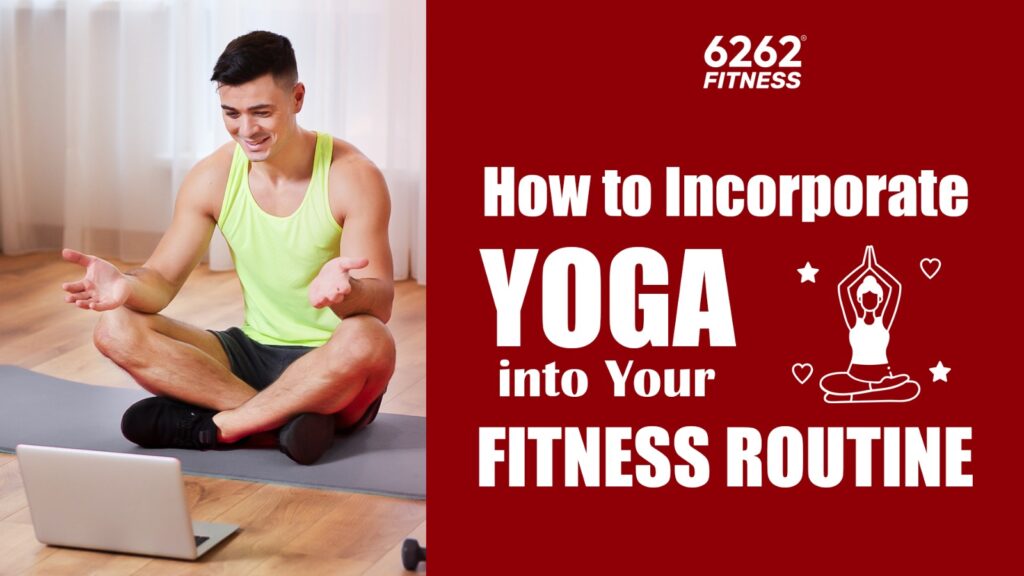The flow of mind, body, and soul is the essence of yoga, making it a powerful addition to anyone’s fitness routine. Whether you are an athlete aiming for peak performance or someone looking for balance and well-being, yoga has several benefits that can help you improve physically and mentally. From increasing flexibility and building mental stability to releasing stress and supporting healthy sleep patterns, Incorporate Yoga into Your Fitness can help you achieve a harmonious state of being.
Benefits of Yoga For Athletes
Research shows that Incorporate Yoga into Your Fitness offers the following benefits to athletes:
Improved balance and flexibility
A 2016 study found that college athletes who Incorporate Yoga into Your Fitness 2 times a week saw major improvements in balance and flexibility compared to those who did not practice yoga. This suggests that yoga can improve performance in sports.
Improved mindfulness
Incorporate Yoga into Your Fitness helps develop mindfulness through awareness of the body, breath, and present moment, leading to greater concentration during athletic activities. A 2017 study found that consistent mindfulness practice improved sports performance. Incorporate Yoga into Your Fitness and personal training sessions or joining online Zoom classes makes it convenient to build mindfulness and enhance athletic performance, no matter your location or schedule.
Injury prevention and stress relief
Yoga offers benefits such as fatigue reduction, muscle soreness relief, and injury prevention. A 2020 study on male soccer players reported positive results after a 10-week yoga program, although there were short-term increases in distress awareness.
Cardiovascular performance
A 2018 study on elite female field hockey players found that hot yoga improved cardiovascular performance and plasma volume percentage, positively affecting the body’s temperature regulation during exercise.
Best Routine to Follow
To get the most out of yoga, practice regularly and follow these tips:
Daily Practice
Aim for short, daily yoga sessions rather than one or two long sessions each week. Consistency is key to seeing improvements in flexibility, mobility, and range of motion.
Balance Intensity
If you engage in strenuous sports, balance your activities with slow-paced, gentle yoga types like Yin, Restorative, or Hatha yoga. These styles focus on relaxation, muscle lengthening, and tension relief.
Key Poses
Yin Yoga: Helps relieve tension and improve range of motion, making it ideal for those with pain and tightness. It also helps release stress.
Restorative Yoga: Promotes relaxation by relieving stress and pain.
Hatha Yoga: Done at a slower pace but includes demanding poses that build strength and flexibility.
Must-Try Yoga Poses
Downward-Facing Dog
This pose helps align the body, correct imbalances, and release pain and stiffness in the glutes, hamstrings, calves, shoulders, and back.
How to do Downward-Facing Dog?
- Start in a tabletop position, press into your hands, and raise your hips toward the ceiling.
- Broaden your shoulders, elongate your spine, and keep a slight bend in your knees.
- Hold for up to 1 minute.
Cobra Pose
The cobra pose relieves spinal compression, improves flexibility, and boosts circulation.
How to do Cobra Pose?
- Lie on your stomach with palms on the floor under your shoulders.
- Lift your head, chest, and shoulders, engaging your lower back, core, and thigh muscles.
- Hold for up to 45 seconds, repeating 1 to 3 times.
- Legs-up-the-wall Pose
This pose boosts circulation, relieves fatigue, and promotes relaxation.
How to do Legs-up-the-wall Pose?
- Sit next to a wall, swing your legs up against the wall, and lie back.
- Position your hips close to the wall, and place your hands alongside your body or overhead.
- Stay in this position for up to 20 minutes.
Warrior II Pose
It builds strength in the legs, improves stamina, and improves balance.
How to do Warrior II Pose?
- Stand with your legs wide apart, turn your right foot out 90 degrees, and your left foot in slightly.
- Bend your right knee to align it with your ankle, and extend your arms parallel to the floor, palms facing down.
- Look over your right hand.
- Hold for 30 seconds to 1 minute, then switch sides.
Pigeon Pose
It opens the hips and stretches the glutes, hip flexors, and lower back.
How to do Pigeon Pose?
Bring your right knee forward from a tabletop position and place it behind your right wrist.
Extend your left leg straight back, keeping the hips square.
Lower your torso over your right leg, resting on your forearms or forehead. Hold for 1 to 2 minutes, then switch sides.
Child’s Pose
It stretches the back, hips, and thighs and promotes relaxation.
How to do Child’s Pose?
Kneel on the floor with your big toes touching and knees apart.
Sit back on your heels and reach your arms forward, lowering your forehead to the ground.
Breathe deeply and hold for 1 to 3 minutes.
Conclusion
You get many benefits when you include yoga in your fitness routine. It can help improve flexibility, balance, and coordination, all essential for peak performance and injury prevention. By consistently doing yoga practice with your athletic activities, you can improve your athletic abilities and overall well-being. Start slowly, listen to your body, and enjoy the yoga journey.
